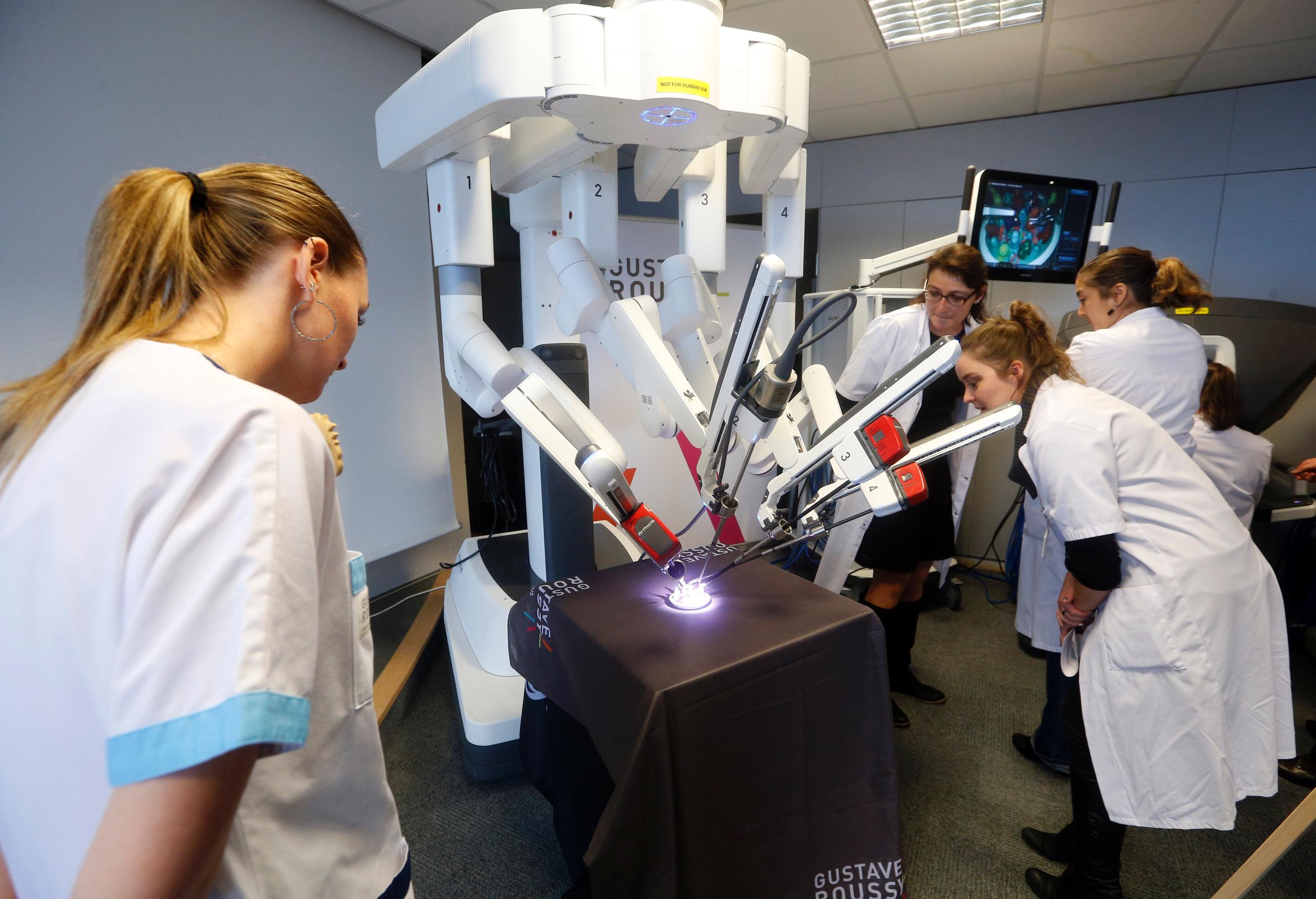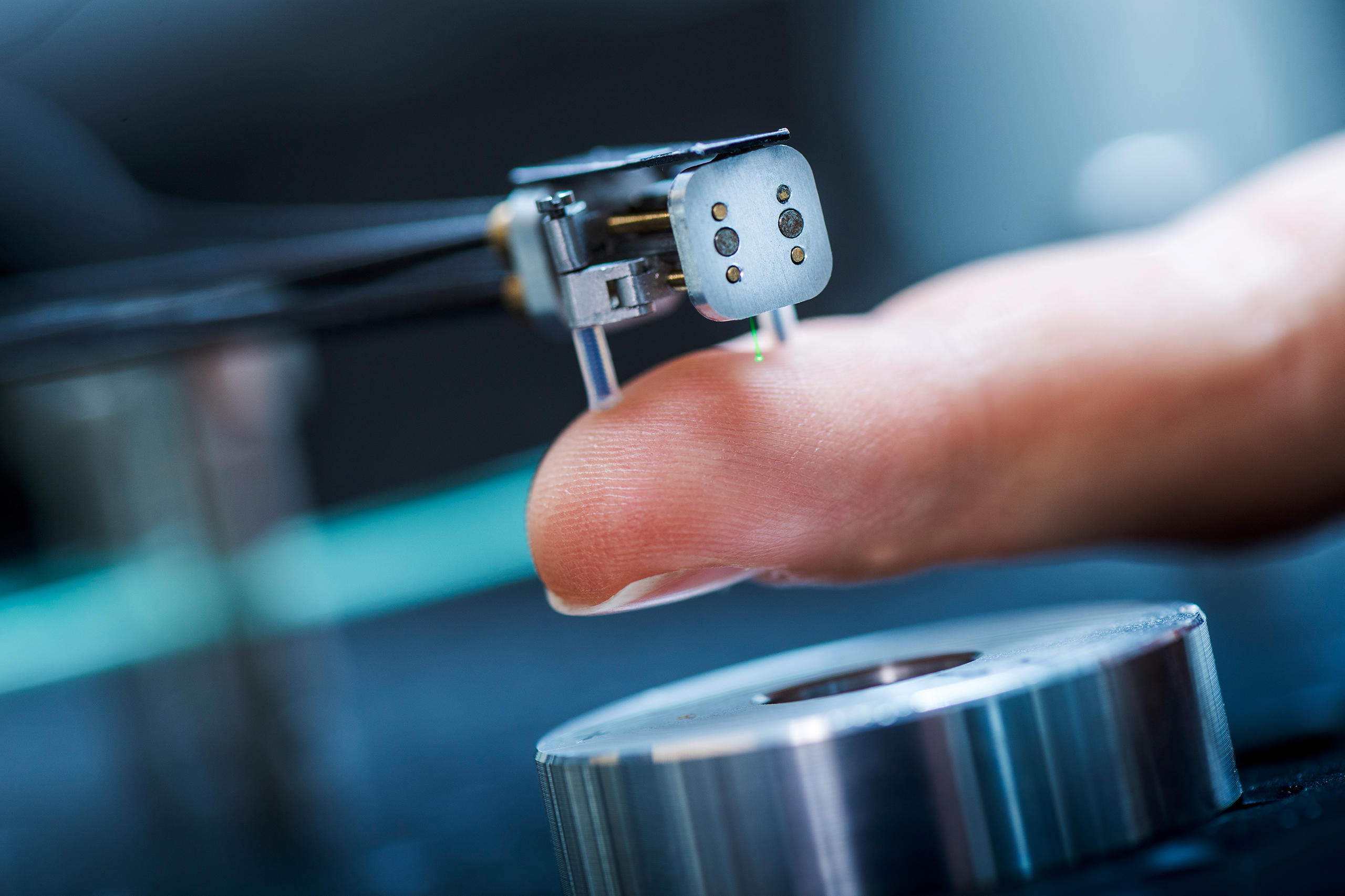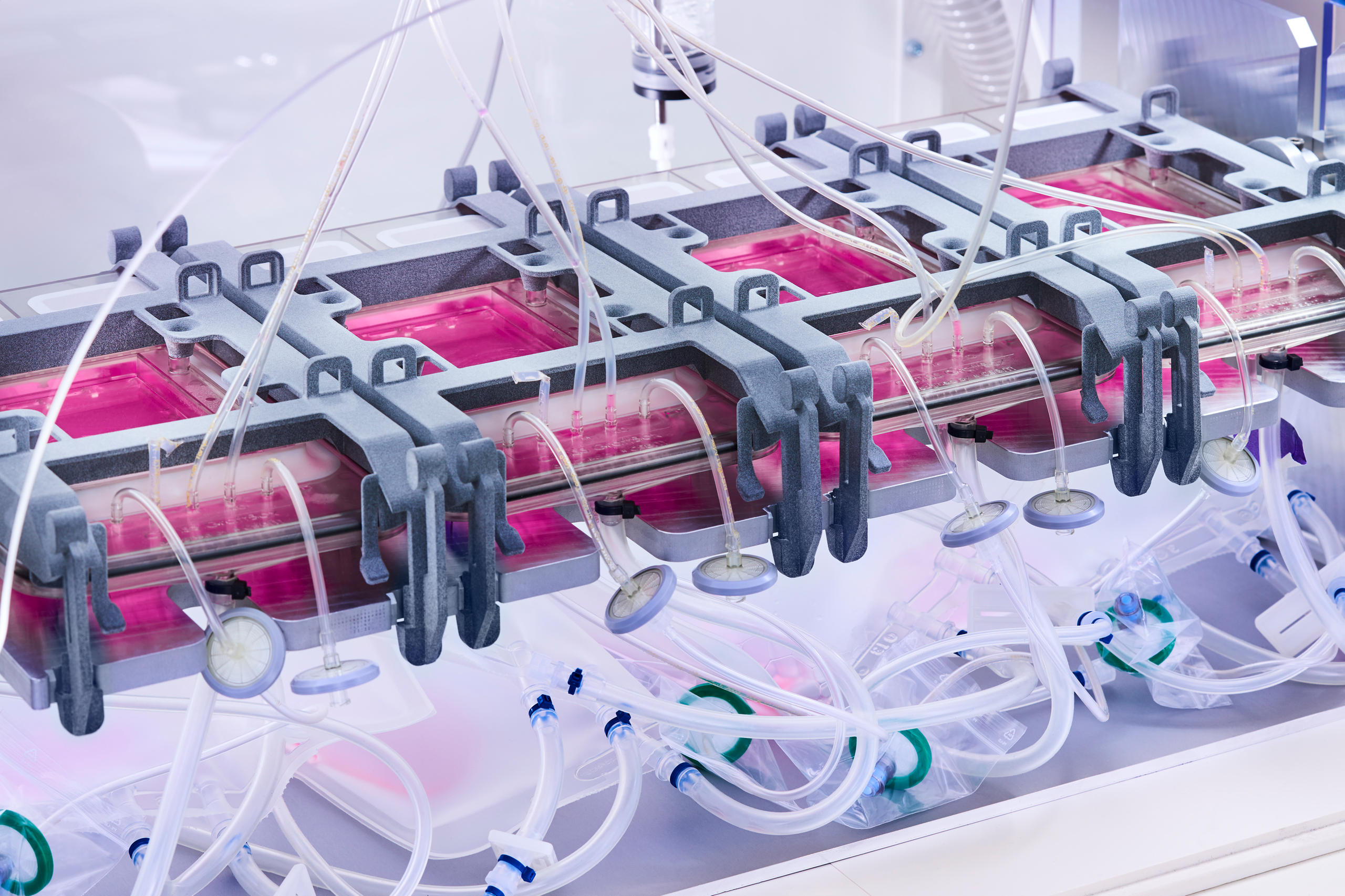
What if your future surgeon were a robot?
From semi-autonomous “robot surgeons” to bioengineered skin tissue, some of the most promising innovations are coming from the “Silicon Valley of robotics”: Switzerland.
“Robotic surgery is the future of surgery. There is no alternative,” said Philippe Morel, a surgeon and pioneer of medical robotics in the Alpine country, six years ago. In 2010, he performed the first gastric bypass operation at one of Geneva’s university hospitals (HUG) using robotic surgery infrastructure from the United States, the Da Vinci Surgical SystemExternal link.

More
Are robot-surgeons set to take over in Geneva?
Since then, the technology has made great strides, marking a turning point in medicine, especially in certain areas. In the field of urology, for example, surgeries related to prostate, kidney and even bladder cancer are now increasingly performed with the help of the Da Vinci robot. Since 2015, more than 22 centres External linkin Switzerland have been equipped with this type of technology.
Today’s robots are not only capable of performing complex operations, but also of assisting medical staff in operating theatres. The Bernese hospitals Klinik Permanence External linkand Salem-Spital were the first in Switzerland to use the Mako robotic armExternal link, also made in the USA, to enable surgeons to implant total or partial knee or hip replacements with unprecedented precision.
The next challenge is to make surgical robots autonomous, using many of the technologies that underpin autonomous cars and drones. Although we are still far from the daily use of automated “robot surgeons”, progress is accelerating, reports the New York Times in a recent article on the subject.External link
What do you think about the use of robots in the medical field? Do they inspire confidence or distrust? Let me know your thoughts!

Switzerland, the Silicon Valley of robotics
Switzerland recently hosted a conference on the medical applications of robotics, Medical Robotics WeekExternal link. Georg Rauter, a biomedical engineering professor at the University of Basel who initiated the event, says it was made to demonstrate Swiss leadership in the field. We met him as part of our collaboration with NCCR RoboticsExternal link, and he told us more about innovation in medical technology.

SWI swissinfo.ch: Professor, where does Switzerland stand in terms of research and innovation in medical robotics?
Georg Rauter: Switzerland is a leader in the field of robotics and medical robotics and can create unique technologies. That’s why it is called the “Silicon Valley of robotics”. Swiss companies don’t just follow innovation, they actively pursue it.
SWI swissinfo.ch: What are the most promising future robotic technologies in the medical field? And which Swiss companies are at the forefront?
G.R.: Surgical robotics, which also includes optical and laser systems, is certainly very promising. Semi-autonomous precision surgical devices sound like something out science fiction. But high precision is difficult to achieve in telesurgery [performed remotely by a surgeon]. Consequently, we expect semi-autonomous, minimally invasive procedures performed by robotic devices to be available on the market in the next few years.
Swiss companies such as Cascination with their HEARO robotExternal link, the world’s first robot specialising in cochlear implants to restore the auditory system, or Aot with the first bone-cutting laser called CARLOExternal link, have pioneered semi-autonomous surgery. Now, the next phase of robot-assisted surgery will involve agile, intelligent and minimally invasive procedures that enable high-precision surgery.
SWI swissinfo.ch:What should patients expect from robotics in medicine? More personalised and precision healthcare or faster and more efficient healthcare?
G.R.: Certainly greater safety and more precise and personalised services. A major achievement of surgical robotics will be the personalisation of treatment, training and operations. The execution of planned procedures by robots will bridge the gap between the digital and physical worlds. This will prove very useful in case of health emergencies, as the Covid-19 pandemic has highlighted, accelerating the implementation of robots. Speeding up interventions and increasing efficiency, on the other hand, is less important when patient safety is at stake or when faster healing can be achieved through personalised precision medicine.
SWI swissinfo.ch: What are the limitations of this technology?
G.R.: Data security is a big issue, particularly in medical robotics. With the Internet of Things, attacks by hackers can be particularly dangerous. Unlike other devices, a cyber attack on a robot can have very serious consequences in the real world. In the medical field, a robot that does not do what it was programmed to do could put lives at risk or injure someone. This is why hospitals try to have closed IT systems and robots are not connected to the Internet.
SWI swissinfo.ch: Can we expect a future of fully autonomous “robot surgeons”? What are the dangers and what are the opportunities?
G.R.: I don’t see this as a possible scenario in the next twenty years. Ethics, patient acceptance, regulatory and legal aspects are not yet ripe for autonomous operations. Humans are particularly good at grasping many aspects in difficult situations. Currently, robots in the operating room do not have as many channels of perception.
AI-based decision-making algorithms are good at judging the data they have already analysed, but what would an algorithm do if it were faced with information that was completely different from what it was trained for? Humans would at least act ethically even if the decision might not be the best one.
New skin, new life
There many more cutting-edge medical technologies that promise to revolutionise our lives, and some of them bear the “Made in Switzerland” label. A recent example comes from the Swiss start-up CUTISS, which last week presented a machine capable of “reproducing” skin tissue. My colleague Marc-André Miserez wrote an article about this extraordinary invention, which could give hope to millions of burn victims around the world. According to Marc-André, this is an absolute novelty in the field of skin grafting. Here’s what he told us about it:
From a small sample taken from the patient, a new machine can generate a surface of “equivalent bio-engineered skin tissue”, perfectly compatible with the donor, up to 100 times larger.
The technique has been the subject of research at the Children’s Hospital Zurich for 20 years. Now the new skin, called denovoSkin, has been approved by drug regulatory authorities in Switzerland, the European Union and the United States and has entered the second phase of clinical trials.
But the big breakthrough is the machine, which will make it possible to go from expensive lab culture to mass production with minimal human intervention. Once phase III is complete, the product could be on the market in 2023.

More
Swiss start-up develops world’s first ‘personalised skin’ machine
Do you have any comments, remarks, or questions about this or other groundbreaking medical technology? Let’s talk about it over a (virtual) coffee.
And coming up in our next edition, don’t miss a special summer newsletter featuring highlights from our upcoming reporting on the Swiss scientific world! If you haven’t yet subscribed to get this briefing in your inbox, you can do so below.

In compliance with the JTI standards
More: SWI swissinfo.ch certified by the Journalism Trust Initiative






























Join the conversation!